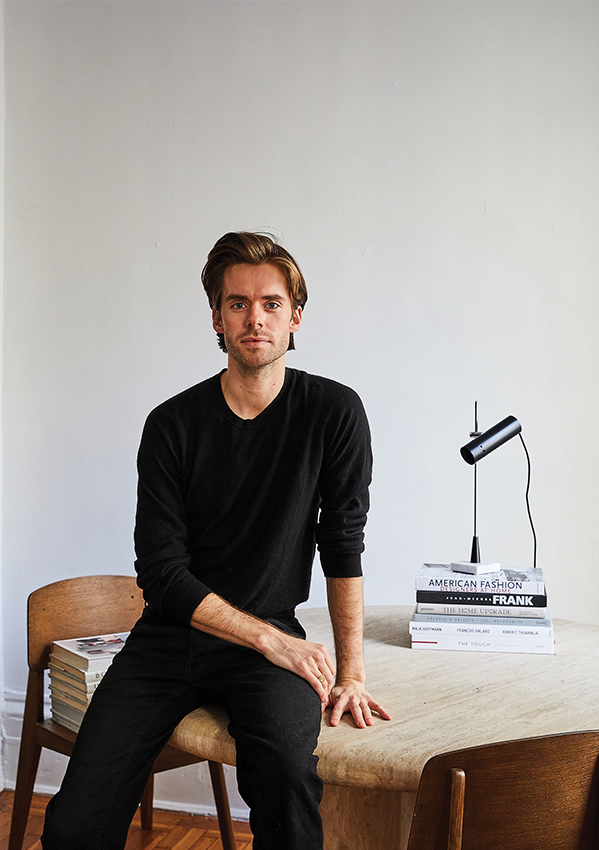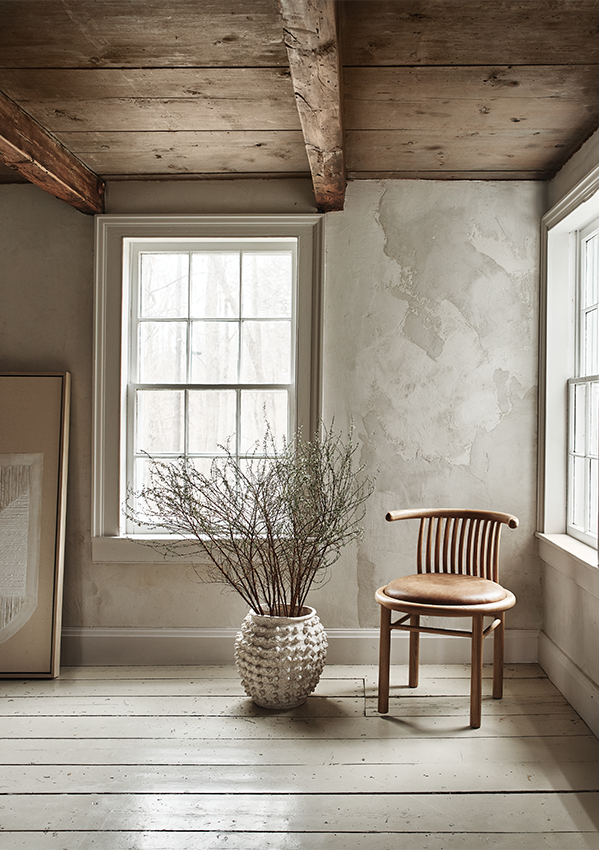




Yaşanmışlığa Atfedilen Dengeli Mizansenler
Colin King

Kimi zaman farkında olmasak da, çevremizdeki enerjilerden etkilendiğimiz yadsınamaz bir gerçek. Bedenimiz adeta bir radyo alıcısı gibi, etrafımızı saran her sinyali fark ediyor ve alıyor. Bu nedenle yaşantımıza sahne olan mekanlar, bu mekanları meydana getiren elemanlar; duvardan zemine, mobilyadan aksesuara uzanan kapsamlı bir yelpazede huzur, mutluluk ve bereket açısından önem taşıyor.
Bir mekanın şifalı titreşimlere sahip olması uzmanlara göre; alınan gün ışığı, tercih edilen renk, malzeme, form birliktelikleri ve içerisindeki eşyalarla doğrudan ilişkili. New Yorklu iç mekan tasarımcısı Colin King’e göreyse, yaşanmışlık da bir mekanda iyi hissetmenin anahtarlarından…
Tutkularının peşinden giden çok yönlü bir karaktere sahip olan Colin, profesyonel bir dansçı olarak başladığı kariyer serüvenine sanat yönetmenliği, iç mekan tasarımı ve son olarak da ürün tasarımı yaparak devam ediyor. Biz de, rafine detaylarla kurguladığı sakin ve dengeli mizansenlerin ardında yatanları ve daha iyi hissettiren mekanlara yönelik çözümleri kendisinden dinlemek istedik.
"Çocukken topladığım çakıl taşlarını eve getirir, raflarda en güzel şekilde sergilemek için yerleştirmeler yapardım. Bugün yaptığım iş için de, bunun biraz daha büyük ölçekli hali diyebiliriz. Ellerimi kullanarak objeler arasında dengeli bir bütün yaratıyor, ait olduğu yerleri bulmaya çalışıyorum.”
Bir mekanın insana iyi duygular hissettirmesi için hangi özelliklere sahip olması gereklidir?
Bence bu ilişki, iç mekanda görmek istediklerimizle sahip olduklarımız arasında yarattığımız uyuma bağlı. Nitekim en başarılı iç mekan kurguları, uzun uğraşlar sonunda edindiğimiz, bizim için hazine niteliğindeki objelerle yaratmış olduklarımız. Bu nedenle zaman içinde bağ kurduğumuz, bizim için özel olan bu parçaları yeniden düzenlemek, yerleştirmek ya da bir araya getirmek bize her daim iyi gelir.
Köklerinde denge ve uyumun saklı olduğu Uzak Doğu felsefelerinden ilhamla kurguladığın iç mekanlarda benimsediğin yaklaşımlar var mı?
Tasarladığım iç mekanlarda Wabi Sabi felsefesinin etkisi büyük. Asimetrik mekan kurgusu ve kusursuzluktan uzak bir tasarım yaklaşımı, Wabi Sabi’nin benimsediğim ilkelerinden. Ek olarak doğa ve doğanın sundukları, çalışmalarım için en önemli ilham kaynağım. Doğada hiçbir şey doğrusal ve simetrik değil; zamanla her şey dönüşür ve yok olur. Benim de en beğendiğim mekanlar gerçek, samimi ve yaşanmışlıklarla zenginleşenler. Tasarladığım iç mekanlarda, eskiyi ve yaşanmışlıkları yücelten patine yüzeyler, dokular kullanarak daha dengeli ve insancıl bir bütün yaratmaya çalışıyorum.
Tasarladığın mekanlarda doğal ışık kurgusunu nasıl yapıyorsun? Sana göre ışığın mekanın şifası üzerine etkisi nedir?
Doğal ışık ile mekanın iyileştirici gücü arasında doğrudan bir ilişki var. Işık bir mekanda algıyı yönlendirirken hislerimiz üzerinde etkili rol oynuyor. Fotoğrafçılarla yaptığımız mekan çekimlerinde, doğal ışığı yakalamak için güneşle adeta kovalamaca oynuyoruz diyebilirim. Doğal ışık, bir tasarımın özgün karakterini ortaya çıkaran, mekandaki mimari detayları daha etkili kılan eşsiz bir güce sahip benim için.
İç mekanlarda ahenkli bir bütün yaratan renk, doku ve form tercihlerin nelerdir?
Genel olarak tasarladığım mekanlarda mat tonlar ve sadeliğin peşinde, bulunduğu mekanla örtüşen formlar kullanmayı tercih ediyorum. Ek olarak kimi zaman formun fonksiyonu takip etmediği tasarımlarda da uyum yakalamak mümkün. Objeleri, işlevlerinin dışında uyumlu bir bütün yarattıklarına inandığım mizansenlere dahil etmeyi seviyorum. Mesela kitap tutacağı yerine kullandığım şamdanlar buna güzel bir örnek olabilir.
Mekana pozitif hisler yükleyen özel tasarım objelerin var mı?
Mumların kullanıldığı alanlarda sihirli bir etki yarattığına inanıyorum; mekanın atmosferini ısıtırken sıcak ve samimi bir hava katıyor. Aslında yarattığım sıcak minimalizm hissi, bana göre spesifik bir objeye bağlı değil. Kaliteli işçiliği merkezine alan, dönem ve stillerden bağımsız bir bütün kurguluyorum. İlham kaynaklarım, farklı alanlardan sürekli beslediğim eklektik fikirlerin bir karması.
Dans ve ritim ayrılmaz bir ikili. Bir dansçı olarak tasarımlarında ritim olgusunu nasıl yaratıyorsun?
Aslında sadece bana içgüdüsel olarak iyi hissettiren şeyi yapıyorum. Kimileri henüz imzamı görmeden, stil danışmanlığını yaptığım çekimlere veya tasarladığım iç mekanlara bakarak projenin bana ait olduğunu anlayabiliyorum ve bu oldukça hoşuma gidiyor. Demek ki belirli bir stil yaratmayı başarmışım. Bu stilin de, bir dansçının mekan farkındalığından köklerini aldığına inanıyorum. Detaylara olan hassasiyetim mekanda hareketle kesişiyor, ortaya kendine özgü bir ritim duygusu yakalayan yaşam alanları çıkıyor.
Colin King | from volume 17
words & interview Naz Gürlek
photography: Nicole Franzen, Adrian Gaut, Peter Margonelli
